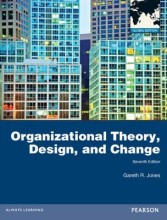Summary: Research Skils
- This + 400k other summaries
- A unique study and practice tool
- Never study anything twice again
- Get the grades you hope for
- 100% sure, 100% understanding
Read the summary and the most important questions on Research Skils
-
1 Research Skils
-
1.1.2 Chapter 4: From your topic to your question
This is a preview. There are 8 more flashcards available for chapter 1.1.2
Show more cards here -
The theoretical framework and interdisciplinary research
When you dointerdisciplinary research , your theoreticalframework is where youlink several theoretical perspectives together; it is where youdescribe how differentdisciplines approach similarconcepts differently. -
Second, filling the knowledge gap must be socially relevant
This means that your research findings should be of interest to society in a broad sense, from businesses to NGOs, and from governments to fellow citizens. When making the case for social relevance, it is often useful to think of a particular target group and to try to put yourself in their shoes; or reflect on current social debates in the media or politics, and the extent to which this study could contribute to them -
1.1.3 Chapter 5: Formulating a good question
This is a preview. There are 8 more flashcards available for chapter 1.1.3
Show more cards here -
Types of questionsAcademic questions can be divided into roughly two sorts of questions
- First, you have comparative questions. These are questions whereby you compare two or more concepts or look at the relationship
- Second, you have explanatory questions. With these, you try to unravel the explanations that underlie a phenomenon, something that is particularly common in literature reviews.
-
In addition, it is very important to delimit your question. In other words, the terms and concepts that make up the question should be defined as clearly and specifically as possible, so that it is clear exactly what you want to research.
For example, it is very important to specify the concept that you are going to investigate in your question. A question such as: ‘What influence does the agrarian sector have on the environment?’ contains the concepts ‘agrarian sector’ and ‘environment’. However, these concepts have a great many different dimensions; the agrarian sector, for example, covers crop cultivation, horticulture, livestock, and so on. The environment covers water quality, air quality, soil pollution, biodiversity, and so forth -
Try to formulate your question in such a way that the dimension you want to research is made clear,
such as: ‘To what extent does crop cultivation have an impact on water quality?’ The final step is often to specify the location and/or the case. For example: ‘To what extent does the cultivation of potatoes in Flevoland have an impact on eutrophication in this region?’ -
Another option is to specify these dimensions in sub-questions. In this case, you take a main question and divide it into sub-questions. For example, the main question could be: ‘What influence does dairy farming have on greenhouse gas emissions?
You can subsequently divide the concept of greenhouse gas into different dimensions and answer each sub-question. For example: 1. ‘What influence does dairy farming have on methane gas emissions?’
2. ‘What influence does dairy farming have on carbon dioxide emissions?’
You then address the answers to the sub-questions in the conclusion. In this way, taken together, the answers to the sub-questions answer the main question -
1.1.4 Chapter 9: The structure of your article
This is a preview. There are 27 more flashcards available for chapter 1.1.4
Show more cards here -
IMD structure (Introduction – Middle section – Discussion)
- You discuss the theory (based on
previous research ) in theintroduction to yourarticle , - the
testing of the data in themiddle section - and the
conclusion and evaluation in thediscussion section
Exactly what is discussed in thesethree parts isdependent on yourdiscipline , but some aspects are always present - You discuss the theory (based on
-
(The middle section) The literature review
a literature review is an article in which you describe the current state of the research in a certain field or in relation to a certain theme or problem
you draw links between different scholarly sources and criticize them
In a literature review, you describe the experiments, results, and conclusions of various articles. -
Presenting dataEnsure that the most important results are also displayed in a figure, or possibly in a table. You should only use relevant data. Other data that support your research, but that are not essential to your story, can be put in an appendix
Note that a figure or table should never be the only place where your data are presented: they should also be included in the text! A figure or table should be comprehensible in itself for the reader, so the caption (figure) or heading (table) should contain enough detail for this. Finally, don’t forget to refer to your figures and tables in the text. -
In a figure, it is common to display descriptive statistics (for example, average and standard deviation) and to use symbols to indicate significant effects. The latter is usually done by inserting an asterisk. Keep it visually simple:
- Don’t use colours or shading in the background.
- Shading should only be used occasionally for very complex tables with lots of cells, and you should only use light grey.
- Don’t use 3D (unless this is common in your field and data cannot be displayed in any other way) or icons (for example, piglets to represent meat production). The latter imply a certain interpretation of the data, something you want to avoid.
- Higher grades + faster learning
- Never study anything twice
- 100% sure, 100% understanding































